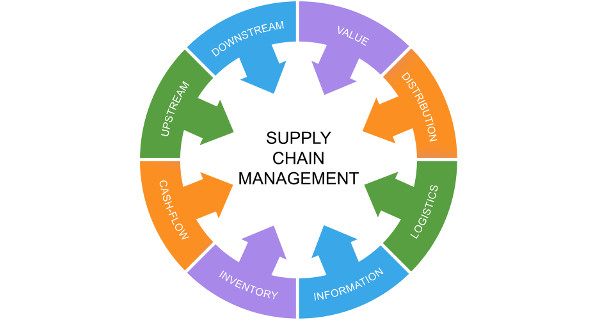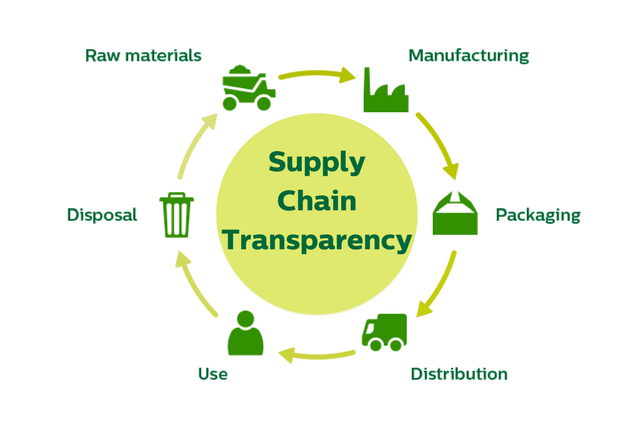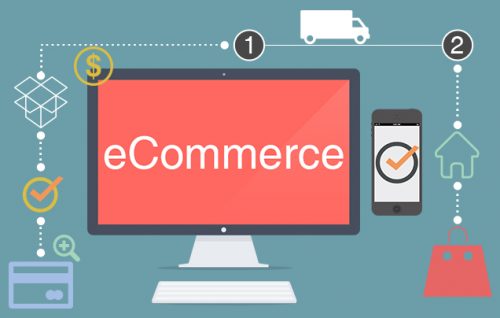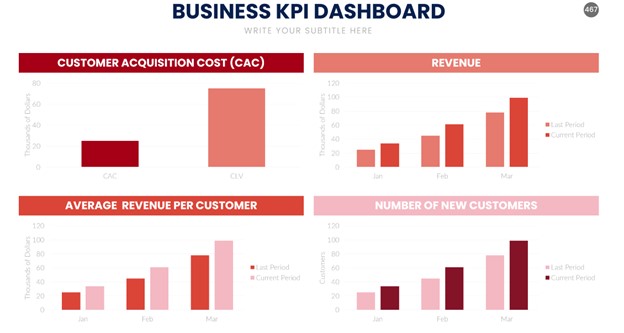16 min to read
How does e-Commerce Influences Supply Chain Management?
From the procurement of raw materials to the delivery of a product to a customer, B2B supply chain management (SCM) includes all stages of commerce. Supply Chain Management and distribution of the right product to the right client at the right time includes manufacturing, warehousing, inventory tracking, order entry, and management. Regarding eCommerce, SCM is also in charge of the platform's front-end, effectively linking the client and the supplier. A successful B2B eCommerce SCM should be built on a solid strategy and implement techniques that benefit both the company and its clients. Because eCommerce takes place between businesses, efficient SCM is essential in B2B eCommerce, where delivered goods might be further dispersed to customers, used to manufacture more products, and so on. One company's SCM system may be linked to another, resulting in dependencies.
In e-commerce, effective supply chain management entails optimization. This can mean a variety of things, including:
-
Maintaining a stronger relationship with your suppliers
-
Preparing for demand spikes or troughs ahead of time
-
Business process automation
-
Inventory management that is "smart."
Successful optimization entails mitigating your customers' known challenges, particularly when shopping online. If you can improve visibility across your supply chain and ensure correct data throughout your firm, your e-commerce plan will be a breeze. You can provide your customers with an online sales and revenue channel that maximizes transparency and communication if you have a well-managed supply chain and the necessary data (and thus, profitability and success). It will also help your company save money and generate more new revenue.
What is the role of e-commerce in supply chain management?

supply chain management
"The growth of e-commerce has impacted supply chain management in several ways. First, it has increased the demand for just-in-time delivery, putting pressure on suppliers to deliver products more quickly and efficiently.
Second, it has made it easier for consumers in comparison to shopping offline, leading to increased price competition among suppliers. And finally, it has created new opportunities for companies to reach consumers in new and innovative ways. Thanks to e-commerce, businesses can now sell products directly to consumers without going through traditional retail channels."
E-Commerce Directly Influences Supply Chain Management
In my opinion, e-commerce impacts supply chain management because it enables transportation companies to exchange documents electronically during the fulfillment process. Additionally, it enables shippers, freight forwarders, and trucking companies to streamline their document management processes without making significant financial or time investments. E-commerce enables businesses to lower overall costs, increase data accuracy, streamline supply chain services, shorten business cycles, and improve customer service. Technology, globalization, and e-commerce are increasingly entwined, and businesses are seizing the opportunity to improve their connectivity and transaction speed. Businesses can now communicate with customers instantly due to technological advancements by meeting their needs and understanding their shopping patterns.

Supply chain management
E-Commerce has caused the supply chain to become more flexible and efficient.
Businesses can now easily collect information on the needs and wants, sell online, reach a wide range of customers, and deliver the products quickly at a low cost.
E-commerce has a dual function in supply chain management.
When it comes to selling directly to customers, e-commerce may be used in various ways, including the retailer's website or via an online marketplace like Amazon or eBay. An additional advantage of adopting e-commerce platforms is that shoppers may get items and raw materials from producers, dealers, and distributors. Customers may buy directly from suppliers through their websites or via a program like Alibaba or AliExpress, just like merchants.
With dropshipping, businesses that utilize e-commerce for product purchases and sales may do away with their supply chain management. Instead, an order placed on the retailer's website is instantly placed with the manufacturer or distributor, who sends the item straight to the consumer when it has been received. In this arrangement, the retailer's responsibility is limited to taking payment from the client and paying the supplier in return for that payment.
Advantages of e-commerce in supply chain management

E-commerce has several advantages in supply chain management. First, it can provide real-time information about inventory levels and order status. This allows companies to make better decisions about when to produce or order products, reducing the risk of stockouts or overstocks.
E-commerce also makes it easier for companies to collaborate with their suppliers and customers. For example, a company can easily send requests for quotes to its suppliers or place orders with its customers. This helps to streamline the ordering process and reduces the need for paperwork.
Finally, e-commerce can help companies save money on transportation costs. Companies can save money on shipping costs by consolidating shipments and using shipping carriers that offer discounts for large orders. This can help to improve the overall profitability of a supply chain.
Contributes to cost reduction
E-commerce enables transportation businesses to exchange documents online during the fulfillment process. Additionally, it enables shippers, freight forwarders, and trucking companies to optimize their document management processes without making significant financial or time investments.
As a result, e-commerce enables businesses to lower overall costs, increase data integrity, streamline supply chain services, shorten business cycles, and improve customer experience.
Traditional Roles Have Seen a Shift
Also, e-commerce has significantly altered the conventional responsibilities of retailers, distribution centers, and transportation suppliers. Retail establishments also serve as product fulfillment centers, picking, packing, and shipping online orders to customers, frequently on the same day.
Affects the demand patterns
Technology, globalization, and e-commerce are becoming increasingly entwined, and businesses are capitalizing on this convergence to improve their connectivity and transaction speed. Businesses may now engage with customers instantaneously due to technological improvements by meeting their requirements and analyzing their purchase behaviors.
Across-the-Board Visibility
I believe supply chain management increases network openness and aids in the oversight of all activities taking place across supply, production, warehousing, and distribution. This allows for better tracking and administration of all processes, from procurement to delivery of final goods to the end-user.
Cost-Cutting

I believe reduced expenses are one of the main reasons customers engage their time and money in eCommerce. There are probably many places where a company invests more than is required. Some of these areas might undoubtedly be made more efficient.
It's worth examining your supply chain to identify places where prices could be reduced. SCM based on eCommerce can considerably lower costs in the supply, production, and distribution processes, resulting in increased profitability.
Improved Customer Relations:
Improved supply chain management guarantees that consumers receive all of the offerings they anticipate from a firm, such as higher product quality, faster and on-time delivery, etc. As a result, their bond with the firm is strengthened, and client loyalty is earned. Furthermore, SCM aids companies in anticipating customer needs. It guarantees that the company is responsive to customer requests for products and services.
Preventing Delays
One of the most significant advantages of eCommerce is reducing delays in measures through correspondence. Because everyone, even consumers, is aware of the product's development, any shipment delays, strategic mistakes in development channels, and production line delays will be avoided.
Visibility
Everything that happens throughout each stage of the supply chain network, including production, warehousing, and delivery, is tracked by inventory management. This ensures greater visibility and effective administration of each function, from the beginning of a product's manufacture to its delivery to the end-user.
Stock Availability and Inventory Visibility
A good eCommerce SCM may assist expedite stock monitoring duties and assure resource availability before they become "out of stock." It can also "link" clients to inventories, providing transparency and the capacity to predict whether or not desired products are available. This may help clients feel empowered and create trust, essential to a business, particularly B2B eCommerce.
Customer Experience

When it comes to consumer empowerment and faith, a solid SCM system may make a massive difference in the customer experience on the eCommerce platform and a company's reputation. Happy consumers (those who had a fantastic browsing experience on the platform and received what they desired when asked for it) are more likely to submit positive evaluations. They may boost a company's reputation by fostering customer loyalty and attracting new clients. In an era where most potential consumers read reviews before buying a product or service, it's a no-brainer to invest in a sophisticated eCommerce Supply chain that can improve customer satisfaction.
Increased Profitability
Due to market saturation, several company industries, such as manufacturers and distributors, may not allow for large profit margins. A competent SCM system may assist in identifying problem areas within a company's operations that might result in increased expenses, delays, or errors, all of which hurt profitability. Solving these issues with an SCM system that provides improved SCM interactions, cost-effective operations, and optimum inventory availability may help a company boost profitability and go ahead of the competition.
Less Cost
In most cases, starting an eCommerce business is far less expensive. The most significant advantage of doing business online is decreasing operating costs. The upkeep of physical businesses costs lots of money, as well as the price might vary a lot from one merchant to the next. Many of them may face additional charges such as leasing, repairs, interiors, stocks, etc. Commercial establishments can join for free and make a little profit on the items they sell.
Furthermore, popular social networking platforms such as Facebook and organic search are cost-effective ways to promote your brand. Because your eCommerce shop is online, your workers can work from anywhere, making it easier to find the right people for the job. You won't have to buy bulk goods if you outsource to the web, saving you a lot of money.
Reduced Overhead Expenses
Organizations can reduce overhead costs by putting aside slow inventory and replacing it with faster and more lucrative goods by making more precise projections. As a result, overhead is reduced, and efficiency is improved.
Better Income

Consider your consumers who don't work regular hours or are too preoccupied to visit a store to make a transaction. An online company store allows you to reach out to people who may have unusual work schedules or don't have the time to buy in person.
Enhanced productivity
Keeping realistic retail management is challenging. However, by combining all of the information gathered from all sections of your business, you will be able to create an improved retail network organization.
Lesser Marketing Cost
The cost of marketing in an internet business is substantially lower because the company uses email, automated texts, and other web-based publicizing channels, such as Facebook and Instagram. Furthermore, HR costs are cheap because most corporate processes are automated and managed online.
Financial transactions and decision-making
E-commerce, when combined with cutting-edge software, enables businesses to make better decisions, select the best partners, precisely forecast and respond to market and demand variations, and reduce inventory network disruptions. For example, it enables you to deal with trustworthy partners and increases revenue by expediting financial transactions.
Multiple Payment Methods

To meet the needs of many customers, the supplier must be able to accommodate their personal preferences. Customers are increasingly requesting personalized payment solutions for their orders. In e-commerce, vendors can accept various payment methods, including Paypal, cash on delivery (COD), credit card payment, net banking, Cryptocurrencies, and Installments using a loan or credit card, etc.
It is challenging to maintain practical retail management at all times. By bringing together all of the data gathered on the various aspects of your business, you will be able to create a more efficient store network organization.
Transparency in Product Information
Ecommerce makes it easy for customers to get a lot of information about what they want to buy. When compared to traditional stores, where the amount of product information available is often restricted to the availability of sales representatives, online stores can provide a considerably broader range of product information in the form of customer reviews and pricing comparisons. Customers become significantly better informed when making purchasing selections due to this. However, in e-commerce, as opposed to traditional retail, this knowledge empowerment can result in considerably stricter competition. To sell their products profitably and stay in business, companies must offer more competitive prices and higher quality than their competitors.
Availability of Products and Service Level
Customer happiness is critical to an e-commerce website's success. Customers will instantly turn to other e-commerce businesses if they cannot purchase the appropriate goods at the right moment. For e-commerce success, a service level of 95% of items is ideal. The danger of losing potential clients grows due to the sluggish delivery procedure, which can also have a bad influence on the company's reputation.
Convenient Display of Products
The cost of maintaining inventory is reduced by simplifying the supply chain. Ecommerce has made and exhibiting your products to customers much simpler and more accessible. Customers can see all of your products on one page rather than navigating from one floor to the next. They would no longer have to wait and go to several places to find the product they want. They may also simply check the best-selling products and choose from the available options. You can also use emails and advertisements to promote the most excellent products.
Role of E-Commerce in Supply Chain Management
According to my understanding, markets are becoming increasingly intertwined on a global scale, and the way customer demands are met is being redefined. As businesses large and small seek the lowest possible costs, raw materials, labor, and production can be sourced from diverse sources. However, manufacturing a product cheaply across the ocean is useless unless you have a way to deliver it to a customer who has placed an order. This is why supply chain management is critical to the e-commerce sector's growth. As manufacturing becomes more global, the coordination and control of a company's goods flow become even more critical to ensuring smooth and productive operations.
E-commerce, when combined with cutting-edge software, enables businesses to make better decisions, select the best partners, precisely forecast and respond to market and demand fluctuations, and reduce inventory network interruptions. For example, it allows you to work with trustworthy partners and increases revenue by streamlining financial transactions.
The Impact of Online Shopping on Supply Chains:
Volatility has been more widespread since the introduction of the internet and online buying. The internet can magnify trends, and e-commerce makes ordering anything from anywhere, at any time, extremely simple. Furthermore, search engine algorithms might significantly impact your brand's visibility.
The landscape has evolved substantially and continues to do so. When it comes to retail supply chains, Amazon has a shipping cost that is 20% lower than multichannel retailers. As a result, Amazon has a monopoly on eCommerce, whereas multichannel businesses may miss out on things consumers want to buy online.
Data Sharing is Creating Supply Chain Transparency:

Data sharing can reduce supply chain volatility for all nodes. Real-time data access allows your company to see the whole supply and demand picture. For example, you can view how much stock is on shelves and in stockrooms if you have access to retail data via POS systems and inventory apps. You can also check retail reports to see what's happening in your niche.
When customers volunteer their information through surveys, questionnaires, social media platforms, and cookies, your company can forecast product demand. In addition, analytics tools like Google Analytics help you analyze your audience from a demographic and geographic standpoint. As a result, you can identify where manufacturing, warehousing, and shipping are in the fulfillment process by utilizing supply chain management software. Then you can tell the customer when their order will come promptly.
The impact of automation on supply chain efficiency:
With access to data, brands require automation – the importance of automation on supply chain efficiency, and thus consumer satisfaction is practically impossible to overstate. With services like 1-Click checkout, Amazon was already on top of automation developments in 2011. The procedure of placing orders on Amazon's e-commerce platform was automated. Thanks to integrated supply chain management tools, Amazon's service received an American Customer Satisfaction Index score of 87 when combined with product suggestions and speedy shipment.
Amazon's market capitalization increased from $100 billion in 2011 to $1 trillion in 2020 due to increased automation and increased efficiency. However, automation isn't just for Amazon or other eCommerce behemoths. Any company that wishes to automate its supply chain can do so without difficulty. All you have to do is link an e-commerce store to your ERP software, including supply chain data and process automation.
Advantages Of E-Commerce in Supply Chain Management:

-
Integrating an order management system with your eCommerce store, physical locations, and ERP. The end-to-end order management process is thus automated, working in tandem with each supply chain link to ensure customer satisfaction.
-
The technique of automatically making and storing bundled things together is known as kits. You don't have to pay extra time putting the bundle together and mailing it out when buyers bundle things online and place an order.
-
Automate billing: With online invoicing, your clients may pay online and receive all necessary payment documentation. Orders will flow faster through the supply chain with speedier invoice processing.
Monitoring Customer Happiness Via Reviews:
Customer reviews can be used to assess your company's reputation. When buyers are studying products and companies, they frequently make the following comparisons: prices, features of the products, product quality, and The reputation of the company. The last two can be discovered through reviews, which are frequently the aspect that attracts buyers to your products...or repels them. If you want positive feedback, make sure the right product (of the right quality) is delivered on time.
Additional Logistics Space.
Because of the rise in SKUs, buffer stock, returned items, and individual picking, packaging, and shipping associated with e-commerce, e-commerce logistics require additional space. In addition, as your firm grows due to your digital marketing efforts, you might profit from partnering with a third-party logistics (3PL) provider and pick-and-pack warehouse services. By outsourcing the majority of your warehouse tasks, you can ensure that the operation is completed correctly and in an area with appropriate space at a lower total cost; also, you will be able to focus entirely on marketing and sales.
Retailers' and Service Providers' Relationships Have Changed.
Businesses earlier used to have greater control over their customers; however, the digital revolution and the rise of e-commerce have transformed the balance of power in this relationship. Consumers today have increased power to influence and guide how merchants and businesses function to suit their needs and desires. Same-day delivery via e-commerce is one option that has become almost mandatory for some firms to please the customer.
Improved Customer Relations
I believe in-time deliveries are ensured by effective supply chain management, which directly impacts customer interactions. SCM assists brands in keeping track of client needs. It ensures that the company is responsive to changes in customer demand for products and services. Businesses can acquire direct feedback and requirements regarding their products through an eCommerce integrated supply chain.
Benefit - Stock Availability and Inventory Visibility:
A good eCommerce SCM can help streamline stock monitoring duties and ensure resource availability before they become "out of stock." It can also "link" clients to inventories, providing transparency and the capacity to predict whether or not a requested product will be available. This can help clients feel empowered and create trust, essential for any business, especially B2B eCommerce.
Network-wide Visibility
Supply chain management promotes transparency throughout the network and helps keep track of the status of all activities across the supply, manufacturing, warehousing, and distribution chains. This allows for more comprehensive tracking and administration of all operations, from the procurement of raw materials to the shipment of finished items to the end customer.
E-COMMERCE EXPANSION

The previous corporate approach was not technologically focused. It was necessary to be physically present to sell or acquire items. As a result, it was challenging to do business without computers. Businesses maintained track of their operations through papers, files, and other complex documents to update and retrieve. Businesses utilized postal mail to transmit information amongst themselves. In recent years, computer technology has been used to store and retrieve data.
The introduction of Information and Communication Technologies (ICT) for businesses radically transformed the way people did business. ICT streamlines corporate operations by allowing for quick communication between trading partners, customers, and organizations, among other things.
Organizations nowadays are always pondering how to grow their company to reach new clients in different areas to get a competitive edge over their competition. This is impossible to do through traditional distribution channels, stores, etc. They do this by using the internet, which is available from anywhere on the planet, and SCM assists them in delivering their goods to customers wherever they want at a reasonable price.
How does e-Commerce Influences Supply Chain Management?

The e-commerce industry is constantly changing and evolving, which means that businesses must be able to adapt to keep up. One of the most important aspects of a business' operation is its supply chain management. For businesses to be successful, they need to have a well-functioning supply chain that can meet the needs of their customers. The role of e-commerce in supply chain management is constantly changing, and businesses need to be able to keep up with these changes.
E-commerce has had a significant impact on how businesses operate and has changed how supply chains are managed. There are several ways that e-commerce has influenced supply chain management. First, e-commerce has allowed businesses to sell their products to a larger audience. This has allowed businesses to reach new customers and expand their customer base. Additionally, e-commerce has allowed businesses to sell their products more quickly and easily. This has eliminated the need for businesses to have a physical store, reducing costs and allowing businesses to sell their products at a lower price.
E-commerce has also had an impact on the way that suppliers are chosen. Businesses can now choose from a larger pool of suppliers, which has led to increased competition. This has led to lower prices and improved quality. Additionally, businesses can now find new suppliers more quickly and easily. This has eliminated the need for businesses to spend a lot of time researching new suppliers.
What are the upcoming trends to keep in mind?

Some of the upcoming trends that businesses should keep in mind are the increasing use of mobile devices and the growing popularity of social media. The use of mobile devices is increasing, and this trend is expected to continue. This means that businesses should ensure that their websites are compatible with mobile devices. Additionally, businesses should focus on using social media to reach new customers. Social media is growing in popularity, and businesses that use social media to promote their products will be more successful.
How do we see Ecommerce and Supply Chain evolve?
The e-commerce and supply chain industries are two of the most rapidly changing industries in the world. Each year, new trends emerge that can help businesses stay competitive. Here are the top trends in ecommerce and supply chain management that our team at Codedesign thinks you should be aware:
- The Rise of Artificial Intelligence (AI): AI is becoming increasingly important for e-commerce and supply chain management. AI can help improve customer experience, automate customer service, and optimize order fulfillment. AI can help automate and streamline supply chain operations, making them more efficient and cost-effective. AI can help predict customer demand, optimize inventory levels, reduce stock-outs risk, optimize delivery routes and improve the overall customer experience.
- Omnichannel: Omnichannel commerce provides a seamless experience to customers no matter which channel they use to shop. This includes online, in-store, and mobile shopping.
- Automated Fulfillment: Automated fulfillment is the process of using machines and robots to fulfill orders. This can help improve accuracy, reduce costs, and speed up delivery times.
- Personalization: Personalization is the process of customizing customer experiences to meet their individual needs. This can include personalized product recommendations, tailored customer service, and more. Companies can use personalization to customize the production process to meet specific customer needs and preferences. This can help to reduce costs and increase efficiency. Personalization can also help to improve customer experience by offering more tailored services and products. Personalization can also help optimize inventory levels and forecasting, resulting in better supply chain planning and improved customer satisfaction.
- Automated Supply Chain: Automated supply chain is the process of using technology to streamline the supply chain. This can help improve efficiency and reduce costs.
- Sustainability: Sustainability has become increasingly important in the ecommerce and supply chain industry. Companies are focusing on sustainable practices such as reducing their carbon footprint, using renewable energy sources, and incorporating sustainability into their supply chain.
- On-Demand Delivery: On-demand delivery is becoming increasingly popular in the ecommerce and supply chain industry. This is the process of delivering goods and services as soon as they are ordered.
- Mobile Commerce: Mobile commerce allows customers to shop and purchase goods and services on their mobile devices. This can help increase sales and improve customer experience
The above trends are just some ways e-commerce and supply chain management are changing in 2021. By staying up to date on these trends, businesses can stay ahead of the competition and remain competitive in the industry.

How to calculate supply chain for e-commerce costs?
Calculating supply chain costs is important because it allows businesses to evaluate the efficiency of their operations, identify cost savings opportunities, and determine the optimal cost structure for their supply chain. It also helps businesses understand the supply chain's full costs, including transportation, inventory, and other operational costs. By understanding the costs associated with their supply chains, businesses can make informed decisions about improving their supply chain and reducing costs.
1. Calculate Fulfillment Costs: First, calculate the cost of fulfilling orders. This includes packaging materials, shipping costs, and labor costs associated with picking, packing, and shipping orders.
2. Calculate Inventory Costs: You need to calculate the cost of storing and managing your e-commerce inventory. This includes renting warehouse space, purchasing inventory management software, and labor costs associated with managing inventory.
3. Calculate Return Costs: You need to calculate the cost of processing returns. This includes the cost of restocking inventory, refunding customers, and labor costs associated with receiving and processing returns.
4. Calculate Customer Service Costs: You need to calculate the cost of customer service. This includes hiring customer service agents, providing support via phone, email, and chat, and labor costs associated with customer service.
5. Calculate Marketing Costs: You need to calculate the marketing cost. This includes the cost of running ads, creating content, and labor costs associated with marketing activities.
6. Calculate Technology Costs: This includes the cost of hosting, purchasing and maintaining software, and labor costs associated with website maintenance.
7. Calculate Administrative Costs: This includes hiring administrative staff, purchasing office supplies, and labor costs associated with administrative activities.
Once you have calculated all the costs of running an e-commerce business, you can add them to get a total price for your e-commerce supply chain.
About CodeDesign
Codedesign is a digital marketing agency specializing in e-commerce and B2B online marketing. Our digital team utilizes the latest digital marketing tools and strategies to help clients reach their business goals. We offer comprehensive services such as website design, search engine optimization (SEO), content marketing, performance marketing, social media marketing, CRM and marketing automation, email marketing, and more. Our experts create and implement customized digital marketing campaigns to increase website traffic, generate leads, and drive sales. Our expertise in e-commerce and B2B marketing allows us to understand the nuances of the digital marketplace and create effective marketing solutions tailored to their client's needs.
CodeDesign is leading:
- Digital Agency
- Digital Marketing Agency
- Amazon Marketing Agency
Feel free to contact us to see the unprecedented growth of your business.




Add comment ×